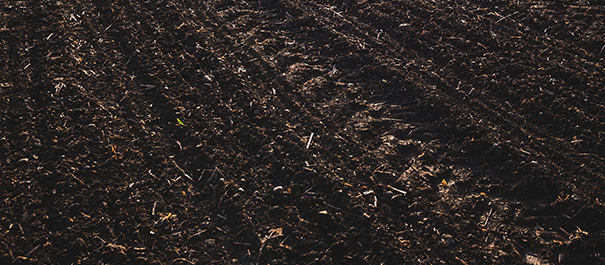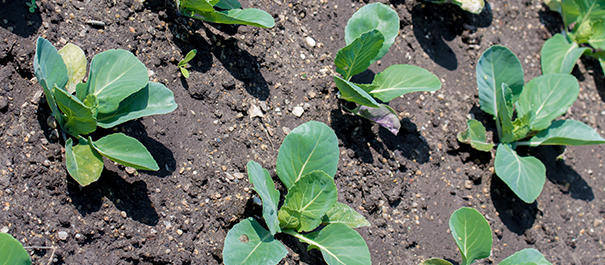






(Unit/t of production)
(Unit/t of production)
N
2.8
2.1
Very Sensitive
P2O5
1
0.8
Sensitive
K2O
3.8
3.2
Very Sensitive
MgO
0.5
0.3
Sensitive
SO3
3.5
2.9
Sensitive
TE
200 g/ha boron (B)
First application

Second (and third) application

Nitrogen, phosphate and potash fertilizers before planting:
The basal nitrogen fertilization depends on the type of planting. Sixty kg N/ha are commonly applied before sowing, while planted seedlings are fertilized with 100kg N/ha as the plant's immediate nitrogen requirement is already significantly higher at this stage. For early planting under fleece, basal fertilization of 150-60kg N/ha is common. In well-supplied soils 60-90kg P2O5 /ha are applied, depending on the desired yield level. Compared to other crops, cabbage requires relatively small amounts of phosphate. Potash fertilization varies significantly between 230-350kg K2O /ha due to large yield differences and is split at high amounts into two applications. It is best to use NPK-fertilizers containing sulphur to address all nutrient requirements for the first application.
When N-fertilization is based on soil analysis (Nmin), the correct time for soil sampling is six to eight leaf stage (after singulation) at a depth of 0-60cm. The amount of nitrogen still missing (nominal value - basal fertilization - Nmin) is applied in two steps when the total requirement is more than 100kg N/ha. Stocks have to be dry during fertilization. Nitrogen in the form of cyanamide (urea) should not be applied shortly before or after any herbicides have been applied. The best time for the two top dressings is shortly after separation, and then about three weeks afterwards. Boron is supplemented with 200g boron/ha in high solution with water, avoiding application on very hot days. Whenever leaf-stem cross-cracks indicate a deficiency, the application should be repeated after one to two weeks. Dryness and/or pH values above 7 increase the risk of deficiency.
LAT Nitrogen Austria GmbH
St.-Peter-Strasse 25
4021 Linz, Austria











